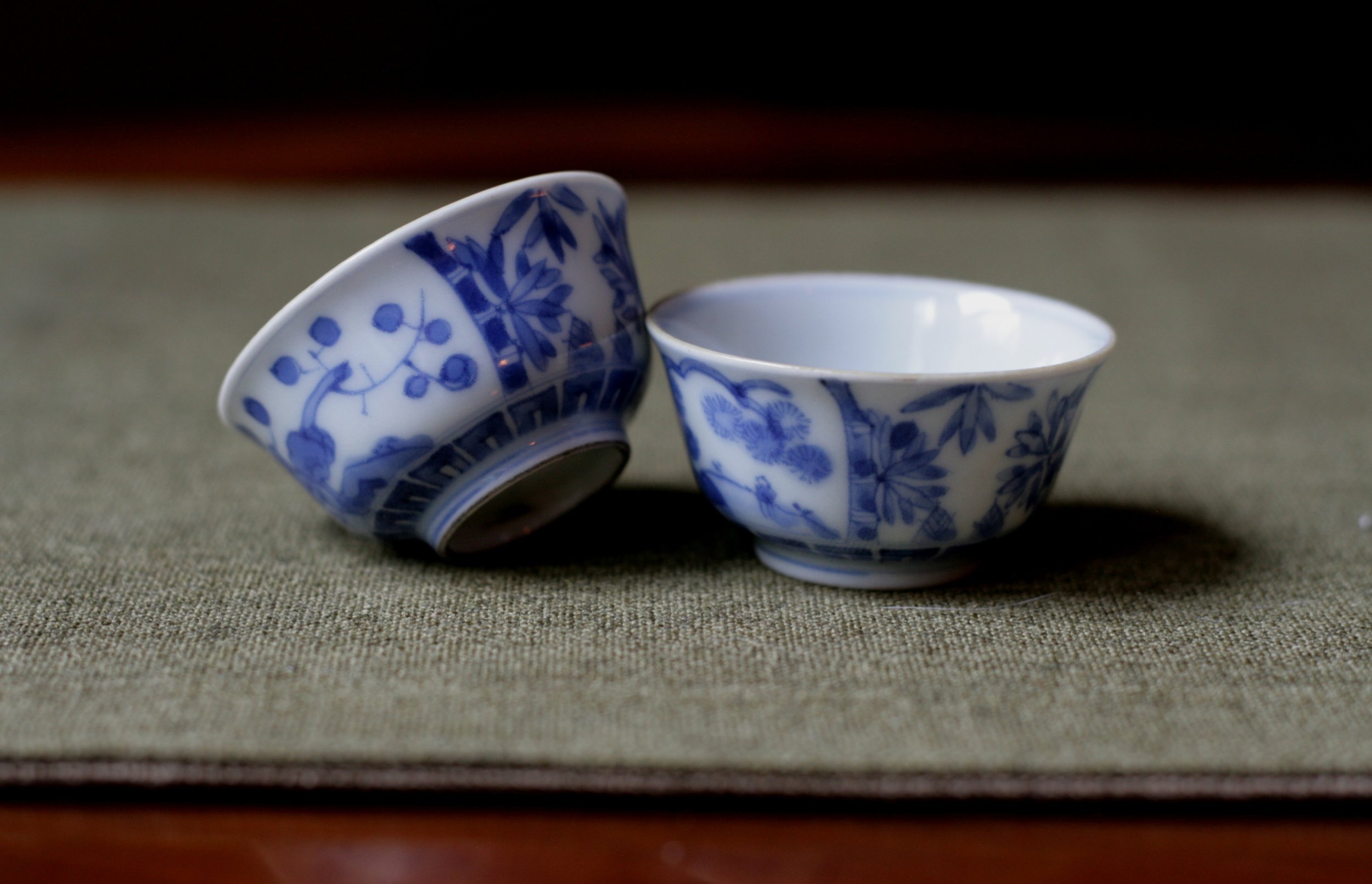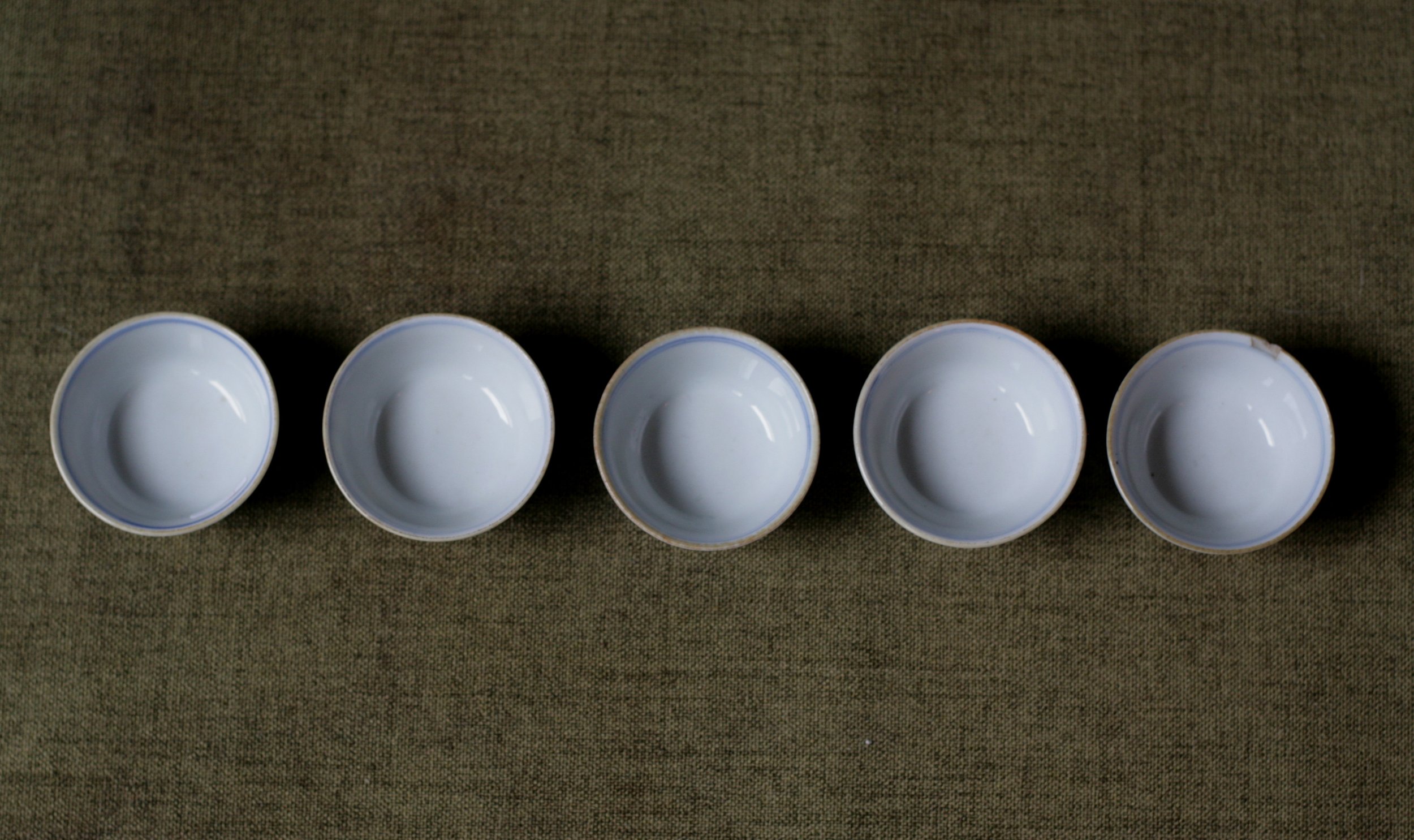 Image 1 of 10
Image 1 of 10

 Image 2 of 10
Image 2 of 10

 Image 3 of 10
Image 3 of 10

 Image 4 of 10
Image 4 of 10

 Image 5 of 10
Image 5 of 10

 Image 6 of 10
Image 6 of 10

 Image 7 of 10
Image 7 of 10

 Image 8 of 10
Image 8 of 10

 Image 9 of 10
Image 9 of 10

 Image 10 of 10
Image 10 of 10











Set of 5 Vintage-Antique Imari yaki small cups with box (16)
Set of 5 vintage-antique Imari yaki small cups with box. 5cm x 3cm. Plum and bamboo motifs painted in underglaze blue on porcelain body.
*Chip to rim on one of the cups.
Small cups perfect for exquisite teas or sake.
Arita yaki is the traditional center for porcelain wares in Japan since the early 17th century. Arita is found in Saga prefecture on the island of Kyushu. Arita yaki is also known as Imari yaki because the porcelain wares were shipped out of the port city of Imari. Porcelain ware production began in China in the 17th century after the discovery of kaolin deposits in Izumiyama near Arita.
Stylistic elements of Arita yaki:
Sometsuke ware – blue and white porcelain ware with blue underglaze painting.
Iro-e – overglaze painting of blue, yellow, red, and green on a white body with transparent underglaze.
Ko-Imari – “old Imari”, a general term traditionally used to indicate Arita porcelain wares made during the Edo period (1603-1868). However, now it seems to indicate anything that is vintage-antique.
Set of 5 vintage-antique Imari yaki small cups with box. 5cm x 3cm. Plum and bamboo motifs painted in underglaze blue on porcelain body.
*Chip to rim on one of the cups.
Small cups perfect for exquisite teas or sake.
Arita yaki is the traditional center for porcelain wares in Japan since the early 17th century. Arita is found in Saga prefecture on the island of Kyushu. Arita yaki is also known as Imari yaki because the porcelain wares were shipped out of the port city of Imari. Porcelain ware production began in China in the 17th century after the discovery of kaolin deposits in Izumiyama near Arita.
Stylistic elements of Arita yaki:
Sometsuke ware – blue and white porcelain ware with blue underglaze painting.
Iro-e – overglaze painting of blue, yellow, red, and green on a white body with transparent underglaze.
Ko-Imari – “old Imari”, a general term traditionally used to indicate Arita porcelain wares made during the Edo period (1603-1868). However, now it seems to indicate anything that is vintage-antique.